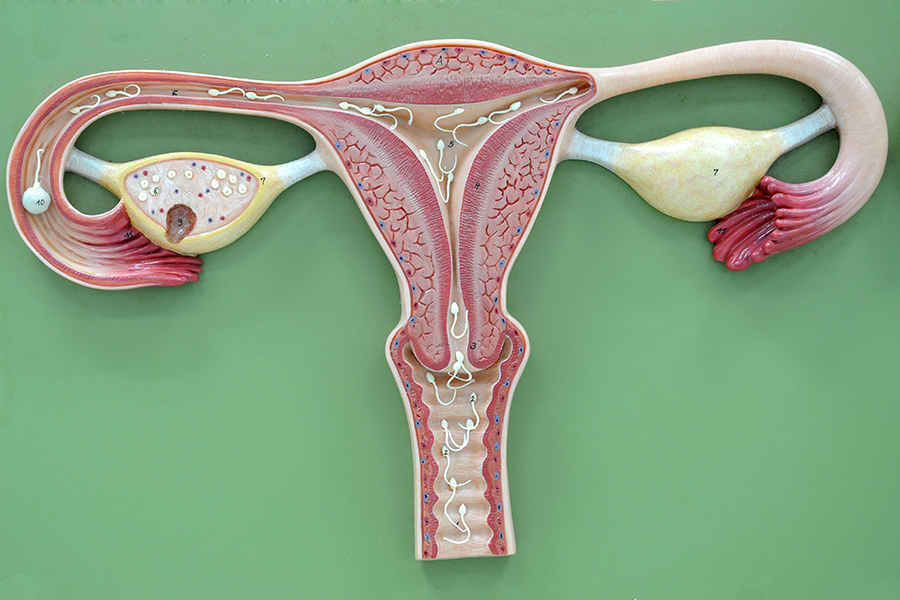Unique pump in sperm cells makes a difficult journey possible
A prerequisite for the sperm cell's difficult journey from the testicle to the fallopian tube is its unique sodium-potassium pump. New studies of the unique pump show how it differs from the sodium-potassium pumps in the rest of the body, and gives hints on why sperm cells have developed their own pump.

Which of the human organs is the most specialised and unique? The brain is of course a good candidate, but if you take into account how many unique proteins are expressed, the testicles are the clear winners with 999 – while the brain ‘only’ expresses 318 unique proteins.
The sperm cells do have unique characteristics and challenges – firstly, they must halve their genetic material and, secondly, a successful sperm must make a long, strenuous journey in a foreign organism.
“Most cells in the body sit in one place – the environment and the neighbours are well known, and the blood provides a constant supply of nutrients,” explains Postdoctoral Fellow Hanne Poulsen. “The sperm, on the other hand, must go on a dangerous journey from the testicle to the fallopian tube, where it is challenged by significant fluctuations in temperature, pH and salt composition. And like any man knows: tough tasks require specialised equipment,” says Hanne Poulsen.
Researchers from the Department of Molecular Biology and Genetics at Aarhus University have now examined one of the 999 unique testicular proteins, namely the ion pump ?4 (alpha 4) located in the sperm plasma membrane. ?4 is called a sodium-potassium pump, which was first described by Jens Christian Skou in 1957. Sodium-potassium pumps are found in all cells and are essential for all organs – so why do sperm cells have their own version of the pump?
The sodium-potassium pump keeps track of the ions inside and outside the cell, and the balance of ions is used to drive a variety of other cellular processes. Just as the electricity supply in a house is needed to run the refrigerator, vacuum cleaner and television, many different systems at the cellular level are driven by the energy that lies in the balance of ions.
You need fuel to drive a pump and, in the cells, the fuel is called ATP. But sperm cells in particular must be economical with their ATP as they have a limited amount. The Aarhus researchers therefore studied how strongly ?4 pumps are affected by changing conditions, and they found that the body’s other pumps are much more sensitive to both temperature changes and different salt conditions. When conditions are good, they pump a lot, and when conditions are challenging, they pump only a little.
“The ?4, on the other hand, does not pump strongly, and it pumps much more steadily under different conditions. For a sodium-potassium pump, the conditions are particularly challenging in the fallopian tube, where the sperm must be activated for powerful movements and needs to keep track of the ions,” concludes Hanne Poulsen.
The researchers therefore suggest that a pump with a good, regular activity can be sufficiently efficient when needed, as earlier in the journey under light conditions, it has not burned all its energy stores on pumping.
Male mice without an ?4 gene are completely sterile, since the pump is required to create functional sperm. Several of the other 998 testis-specific genes are necessary for reproduction, so a drug that inhibits the ?4 pump, for example ,could potentially be developed into an oral contraceptive for men. However, a powerful blood-testis barrier makes it difficult to get drugs to reach the sperm. Before the pill for men becomes a reality, a solution for how to get the drug to the sperm must therefore be found.
Read the scientific article in FEBS Journal: The ?4 isoform of the Na+, K+ -ATPase is tuned for changing extracellular environments.
More information
Postdoc Hanne Poulsen
Department of Molecular Biology and Genetics, Aarhus University
Denmark
hp@mbg.au.dk - mobile: +45 3025 4065
